Components
| Components |
| Control module |
The control module is located under the floor mat on the left side under the front seat.
| Siren |
The extra horn (siren) is mounted behind the left rear part of the wing liner in the left front wheel housing.
Depending on the requirements in different countries, only the extra horn is used or it is used together with the standard horn behind the grille.
| Door switches |
The ICE control module informs the theft alarm control module when a door is open/closed.
| Hood switch |
The hood switch is located by the main fuse box in the engine compartment.
The switch closes at the slightest opening of the hood.
| Microswitch, tailgate |
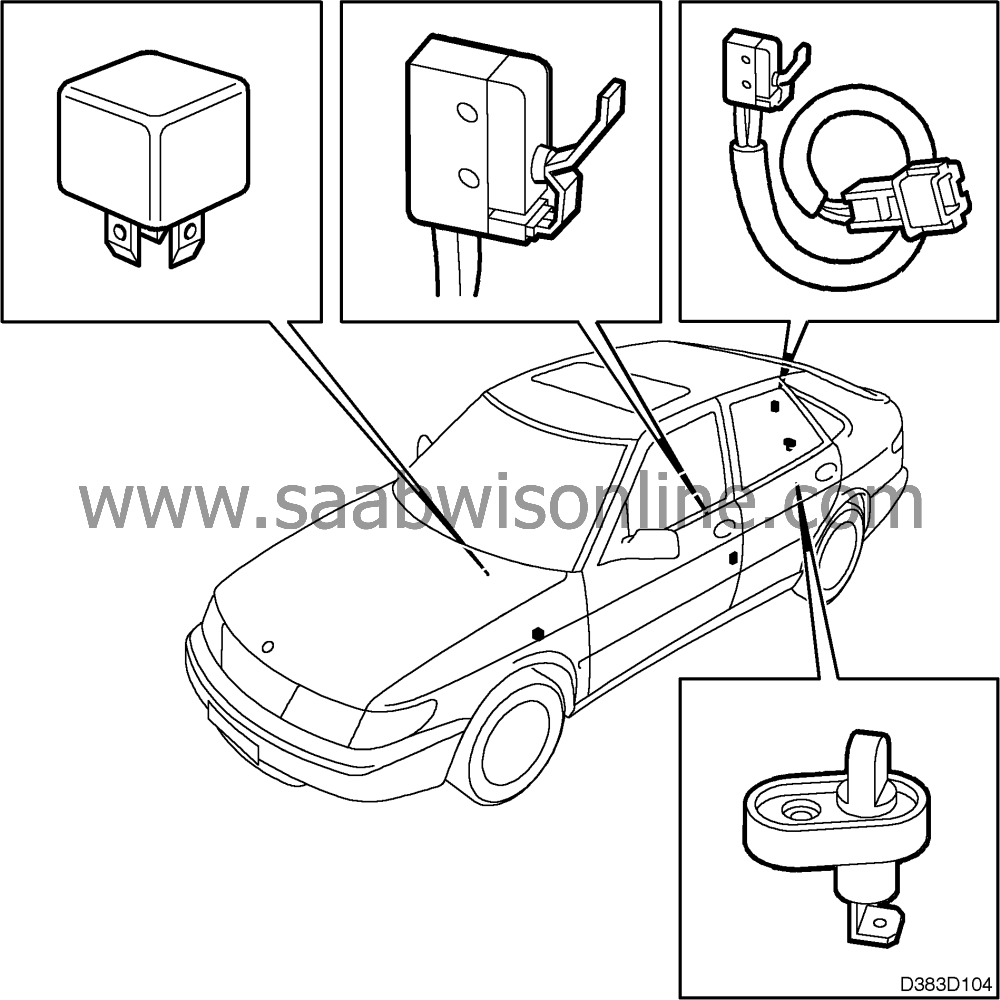
The microswitch located by the lock cylinder in the tailgate makes it impossible to unlock and open the tailgate without the alarm sounding off.
| Switch, luggage compartment lighting |
For monitoring the luggage compartment, the switch for the luggage compartment lighting is used.
| Starter relay |
When the alarm is activated, an opening relay built into the control module draws power for approximately 30 minutes. This means that the start relay for the starter motor does not receive any operating current. If a new alarm should be activated within the 30 minutes, a new time block period is started.
| Microswitch, driver door |
Activation and deactivation of the alarm is accomplished using a microswitch by the lock cylinder in the driver door. The microswitch is also used for the central locking system.
| LED |

There is an LED fitted in the dashboard which flashes at different frequencies depending on the various conditions.
|
Function
|
LED
|
Time
|
Frequency
|
|
Activation
|
steady glow
|
10 seconds
|
|
|
Deactivation
|
steady glow
|
1 second
|
|
|
A door or tailgate
is open
during the delay period
|
flashes
|
10 seconds
|
1 flash/second
|
|
A door or tailgate
is opened
during the delay period
|
steady glow - flashes
|
10 seconds
|
1 flash/second
|
|
A door or tailgate
is closed
during the delay period
|
flashes - steady glow
|
10 seconds
|
|
|
Tailgate is
closed after
delay period
|
flashes - steady glow
|
10 seconds
|
|
|
Tailgate is
opened after
delay period
|
flashes
|
|
1 flash/2 seconds
|
|
Activated alarm
|
flashes
|
|
1 flash/2 seconds
|
|
In case of system malfunction
|
flashes
|
during delay period
|
1 flash/second
|
| Function and use |
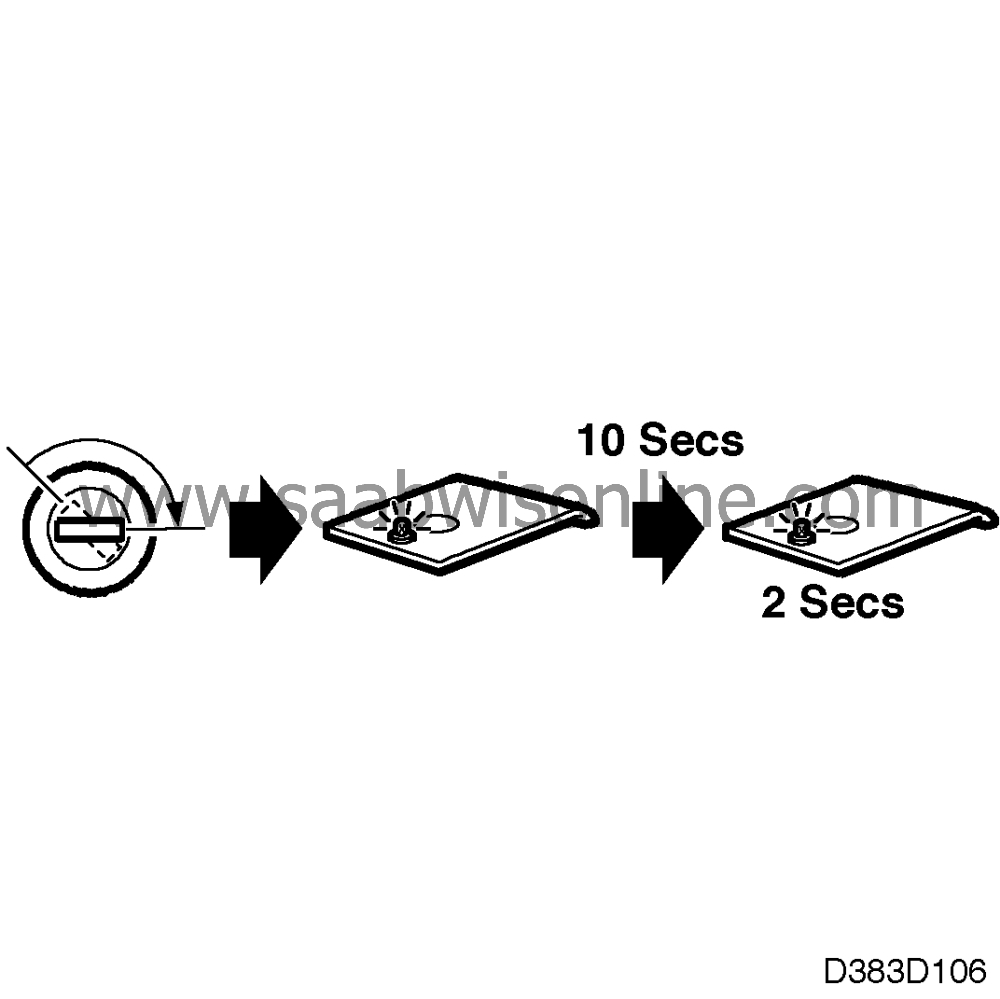
The alarm is activated when the key is turned clockwise 90 °, that is, 45 ° past the lock position, so called theft alarm position.
| Important | ||
|
Pull out the key from the theft alarm position in order to achieve full function. |
||
When unlocking, the key is turned 90° counter-clockwise from the neutral position. When the alarm has been activated, the arming of the alarm is delayed for 10 seconds (delay period). Within these 10 seconds, doors, hood and tailgate can be opened without tripping the alarm. During the delay period (10 seconds), the LED glows steady and then switches to flashing with a frequency of 1 flash/2 seconds.
If a door, the hood or tailgate is opened during the delay period, the steady glow changes to flashing with a frequency of 1 flash/second.
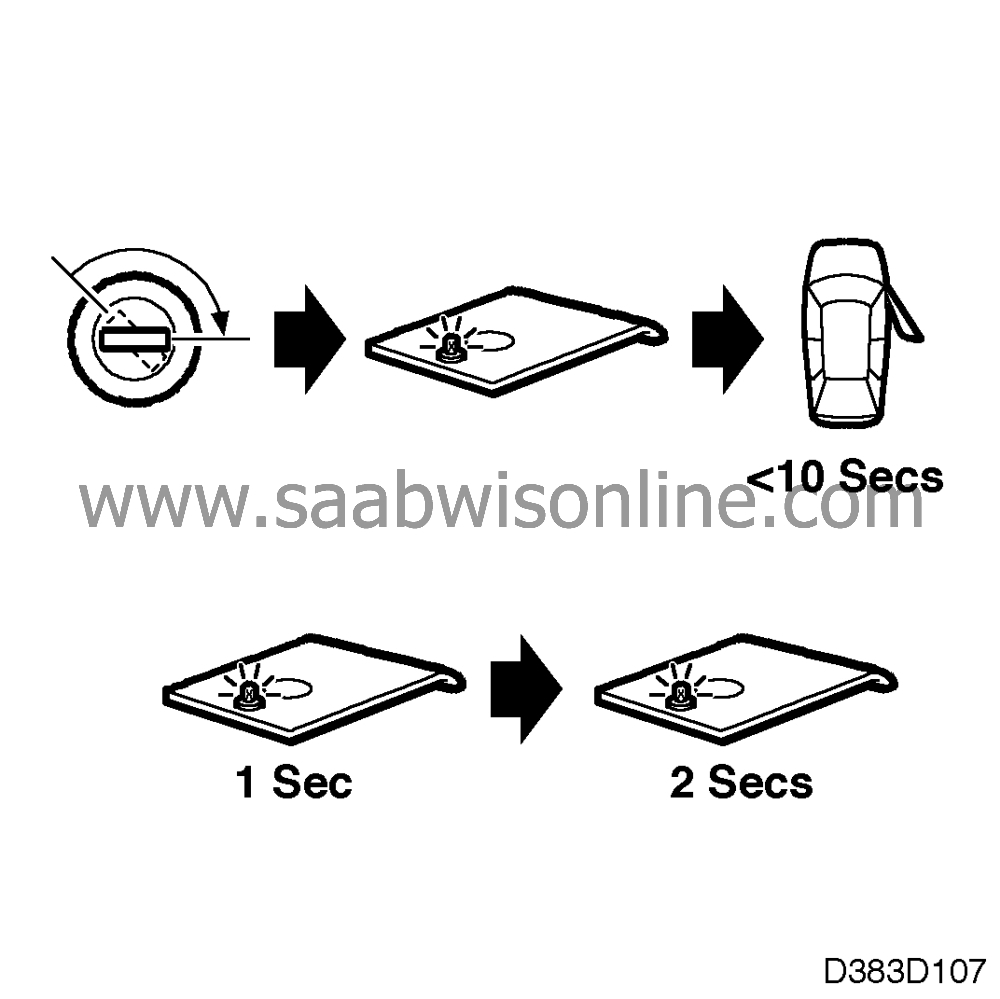
When the alarm has been activated, the LED flashes with 1 flash/2 seconds. When the alarm is deactivated, the LED glows for 1 second.

| Ignition switch |
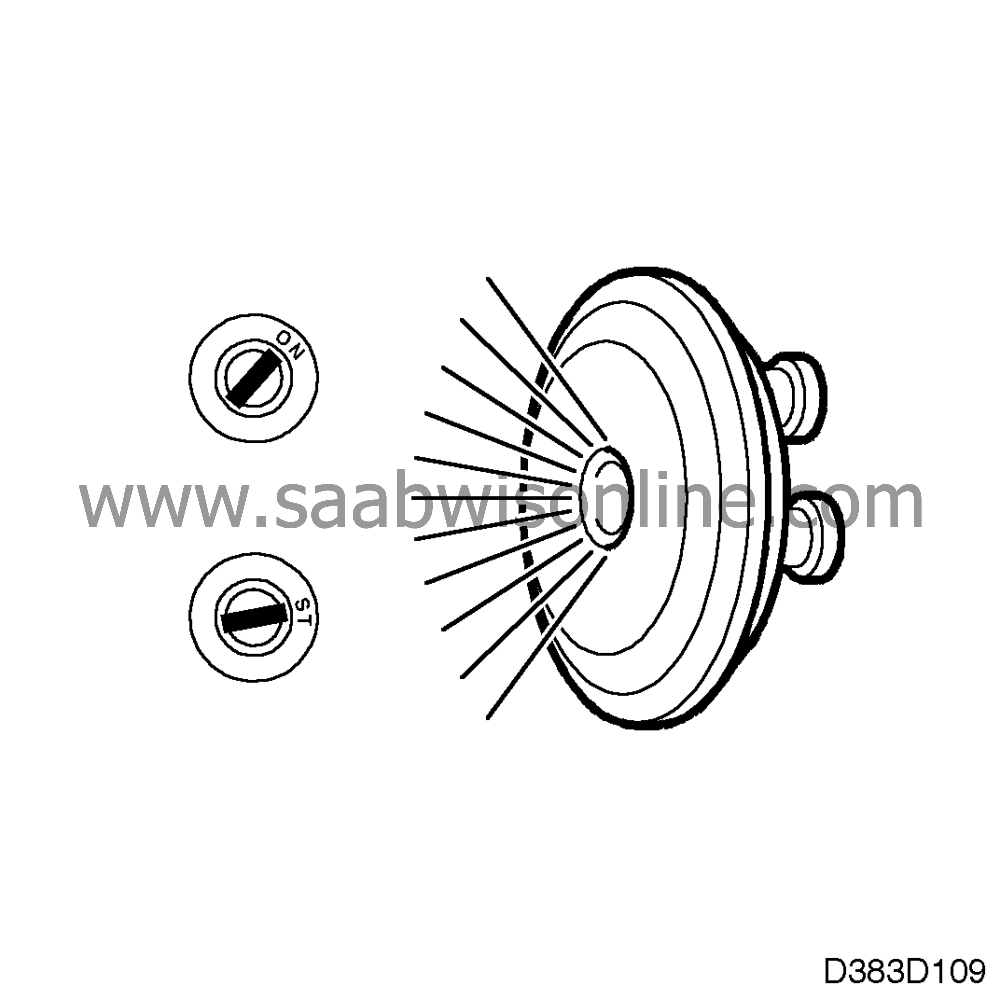
The alarm cannot be activated when the ignition is in the +15 position. When the alarm is activated, it is tripped if the ignition is turned to the +15 or +50 positions.
| Doors and hood |

If a door or the hood is open or is opened during the delay period and remains open for more than 10 seconds, the door in question or hood is removed from the monitoring function. When the door or the hood is closed, a new delay period starts, but only for the door or hood which has been open. The LED glows steady. For all other doors or the hood, the alarm is still activated.
| Boot lid |
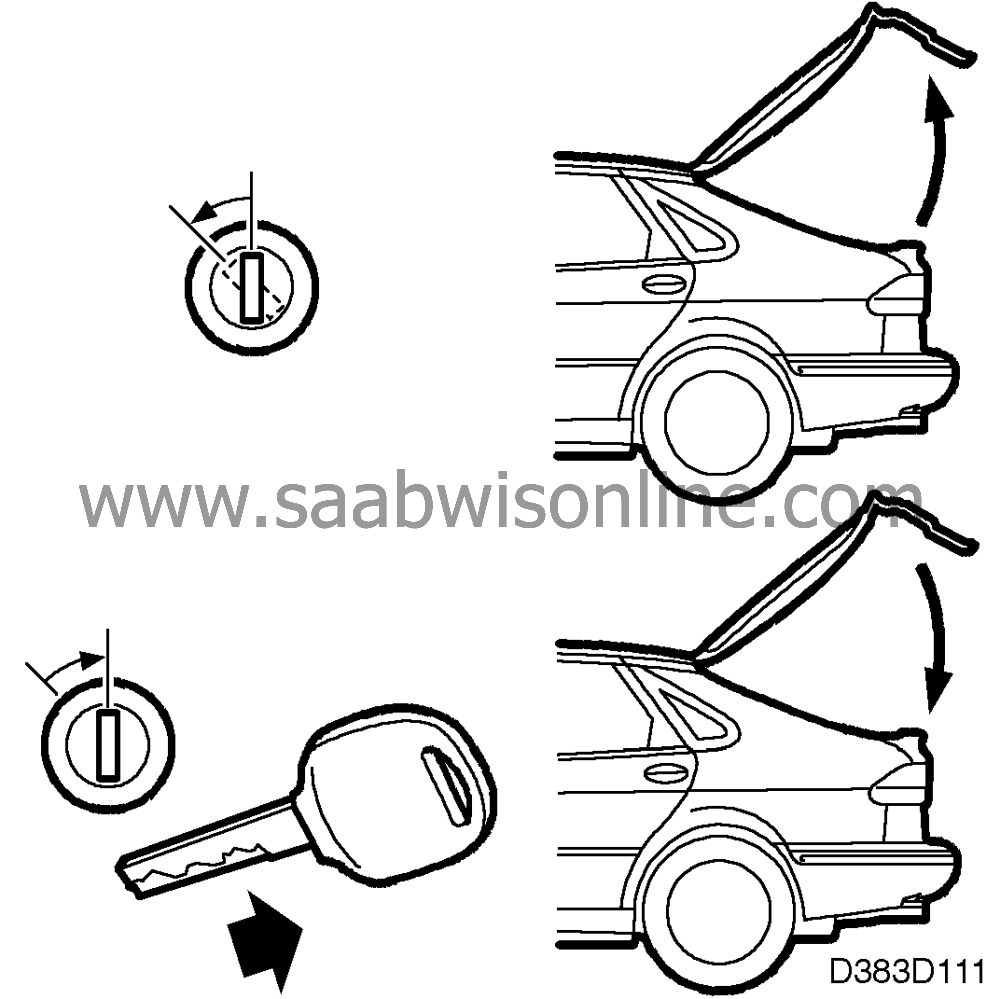
It is possible to open the boot lid with the alarm activated without tripping the alarm. The boot lid monitoring function is then removed from the alarm. Unlocking and locking of the boot lid must be performed as follows in order to not trip the alarm.
| • |
Turn the key to the unlocked position.
|
|
| • |
Open the boot lid.
|
|
| • |
Turn the key back to neutral position.
|
|
| • |
Remove the key.
If the boot lid is opened with the key during the delay period, the LED flashes with a frequency of 1 flash/second for 10 seconds. The alarm is activated following the delay period, but the boot lid is excluded from the monitoring function. When the boot lid is closed, a new delay period starts, but only for the boot lid. The LED glows steady. The alarm is still activated for all other doors and the hood. |
|
| Setting off the alarm |
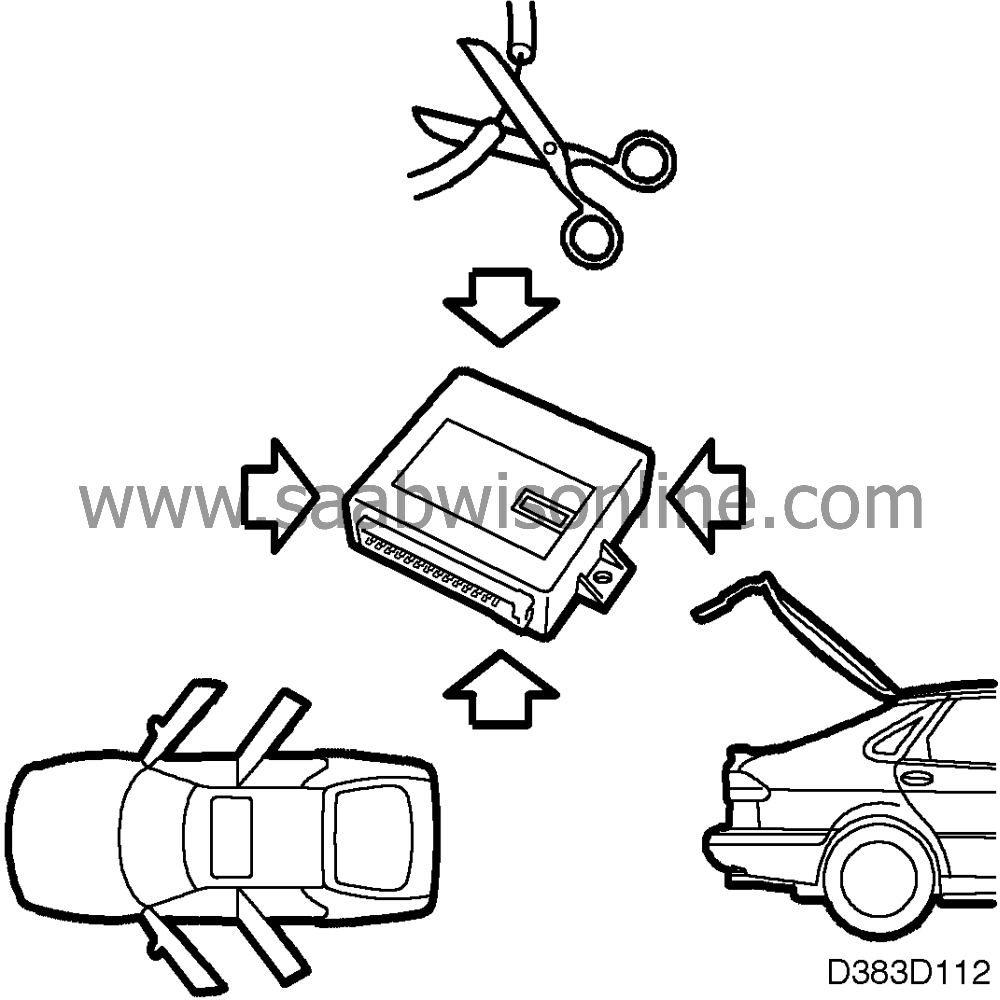
When the alarm is activated, it will sound off if the alarm information is received by the control module connections as follows:
| • |
severed deactivation lead (pin 11).
|
|
| • |
Door switch grounded (pin 3).
|
|
| • |
Hood switch grounded (pin 16).
|
|
| • |
Switch, luggage compartment grounded (pin 4).

|
|
| • |
Engagement or bypassing the ignition (+15 or +50 position on the ignition switch).
|
|
| Acoustic alarm |

The acoustic alarm comes from the siren (and eventually the horn). The acoustic signal can be programmed according to requirements and legal standards in different countries. Programming is accomplished with ISAT.
| Optical alarm |
The optical alarm consists of all direction indicators. The light signal can be coded according to requirements and legal standards in different countries. Coding is accomplished with ISAT.
| Repeat alarm |
If a new alarm signal is received at the control module connection after the end of the acoustic alarm, the acoustic and optical alarm will be tripped again.
| Protection against false alarms |
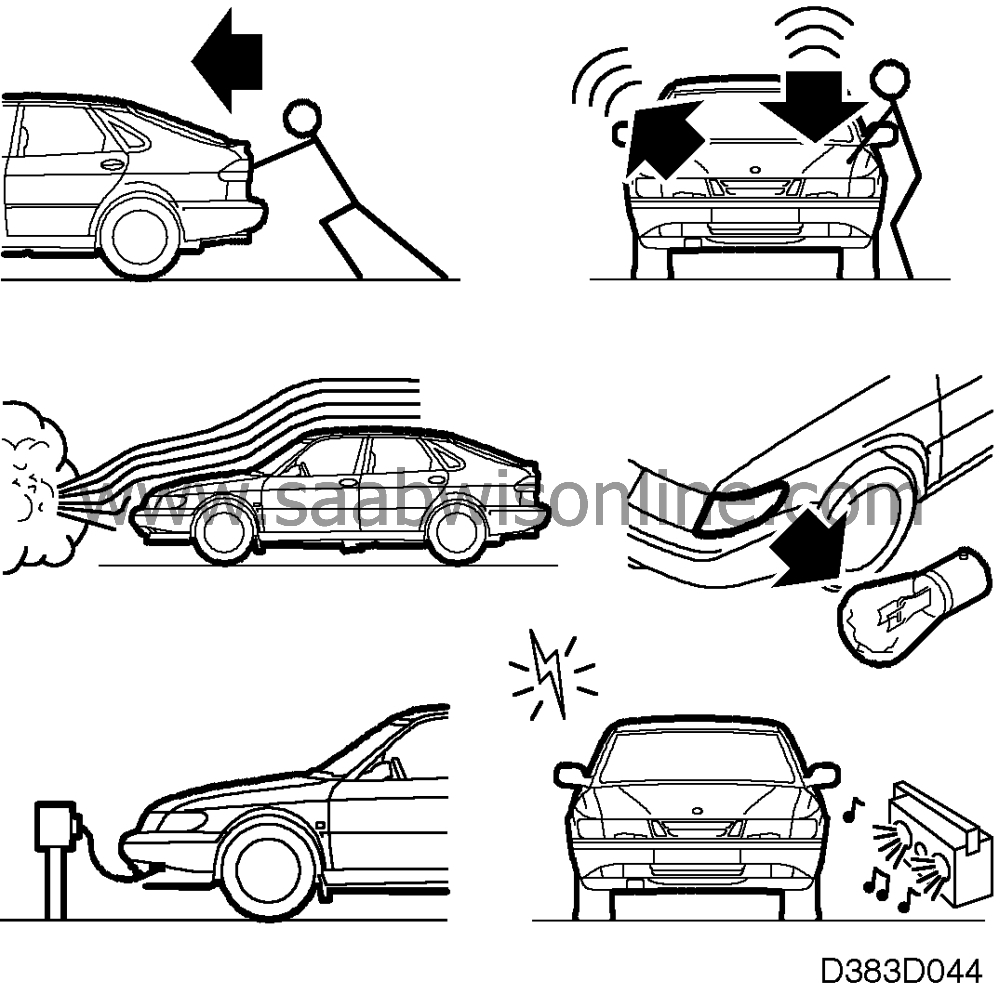
The activated alarm is protected against false alarms according to the following:
| • |
Knocks to the car.
|
|
| • |
Vibration of the car.
|
|
| • |
Wind load (external pressure waves).
|
|
| • |
Malfunction of a direction indicator bulb.
|
|
| • |
Automatic on-off switching of components using power.
|
|
| • |
External noise.
|
|
| • |
Changes in external light intensity.

|
|
| • |
Air flow and turbulence in the car.
|
|
| • |
Temperature changes inside the car.
|
|
| • |
Fan noise from auxiliary heater inside the car.
|
|
| • |
Noise transferred from outside through the body to the inside of the car (e.g. rain and hail).
|
|
| Functional safety and diagnosis |
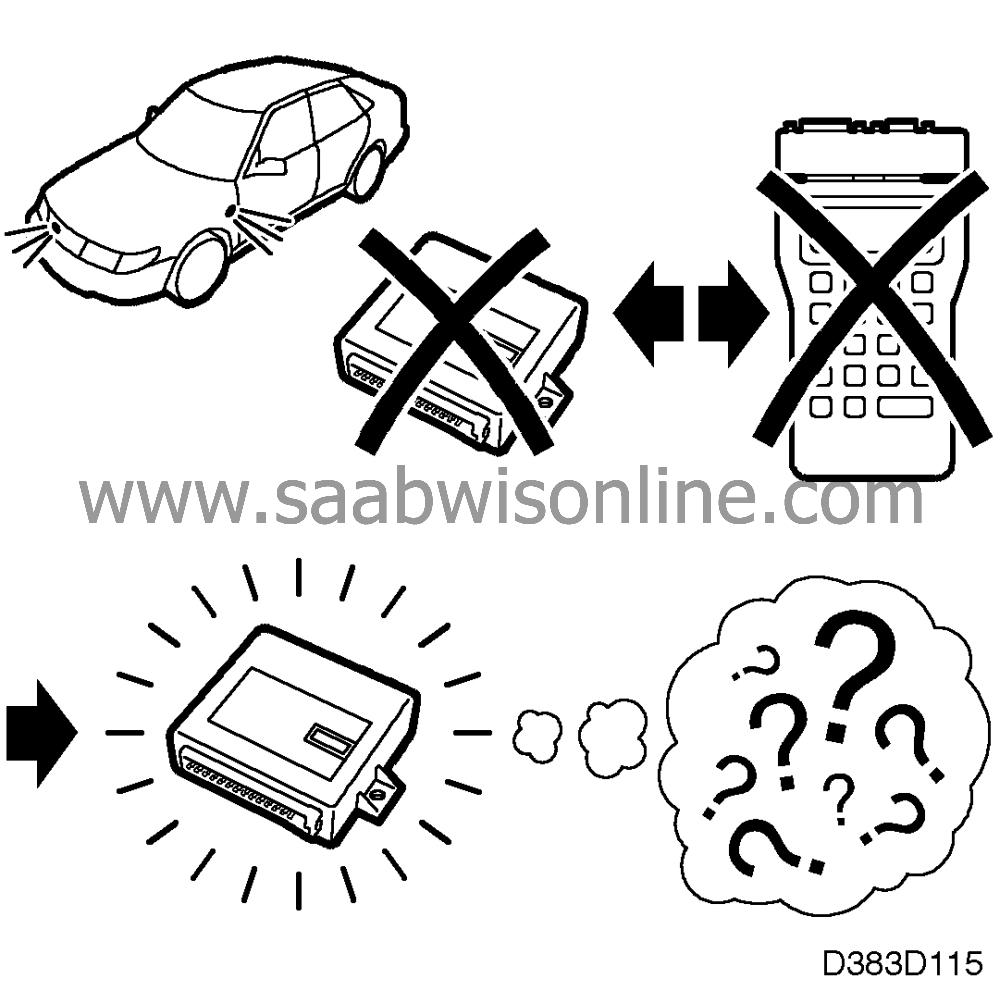
| 1. |
When the acoustic alarm is tripped and sounds off, the control module function must not be disrupted.
|
|
| 2. |
The control module performs a self-diagnosis each time the alarm is activated.
|
|
| 3. |
If a malfunction is detected, the LED flashes with a frequency of 1 flash/second during the delay period. The function of the alarm is maintained as much as it is possible.
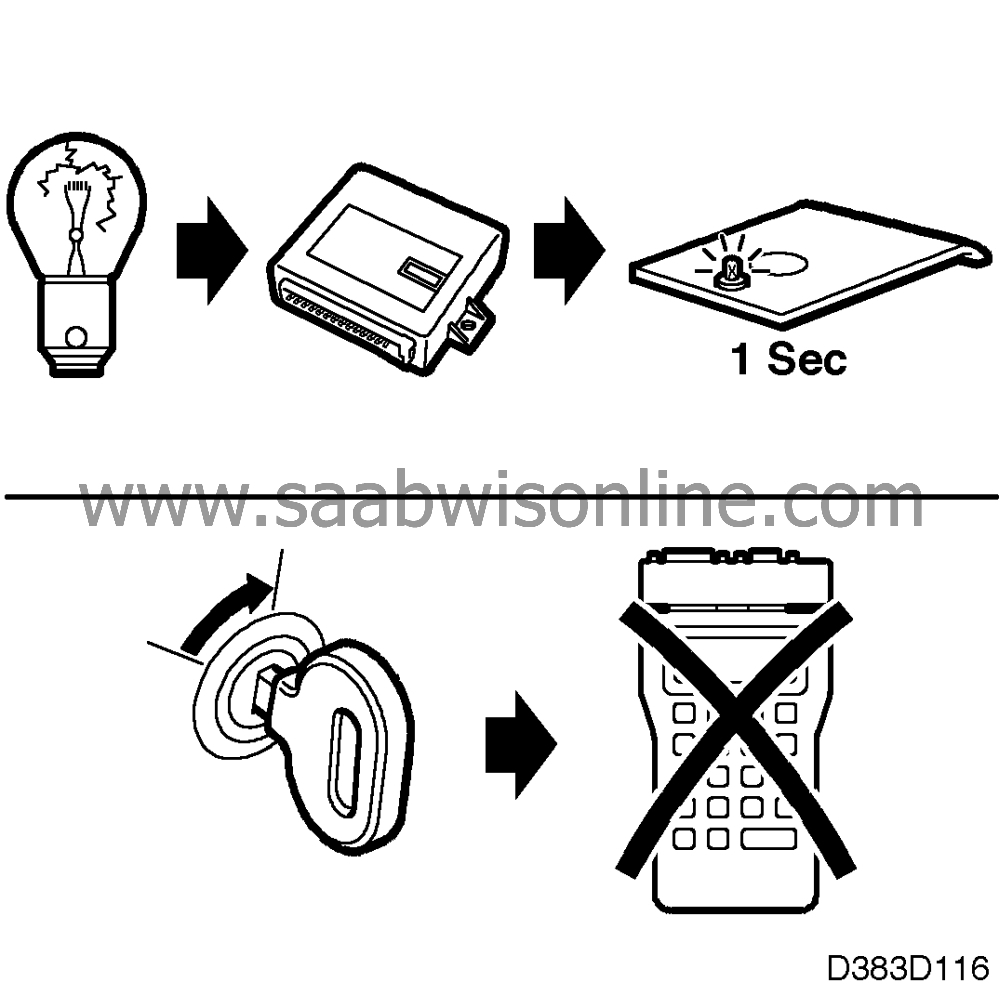
|
|
| 4. |
Communication is not possible between ISAT and the theft alarm control module when the alarm is activated.
|
|
| Operating voltage drop +30 when the alarm is activated |

If the battery voltage drops, for example, when disconnecting the battery or the battery is discharged, the alarm is no longer activated. When the voltage returns to normal, the alarm resumes the activated mode as before being disconnected.
| Short-circuit protection for direction indicators |
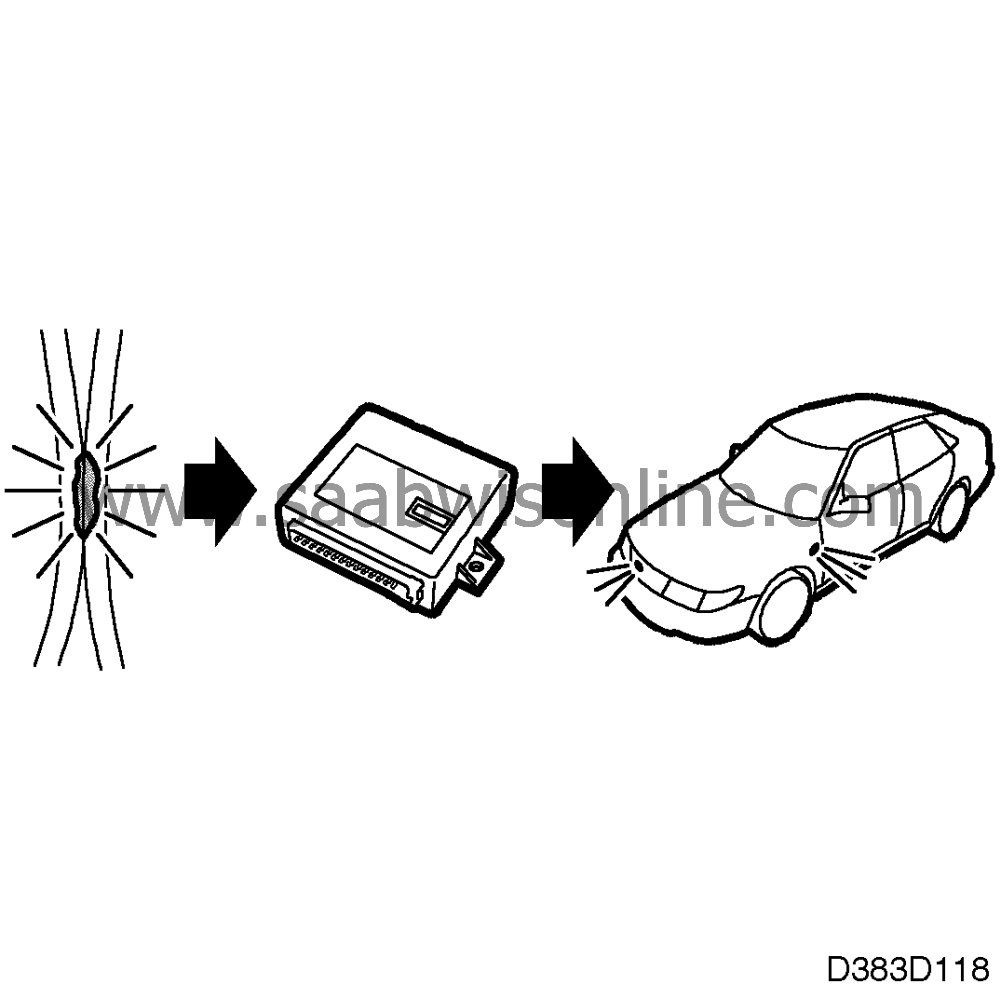
The theft alarm control module can detect any short-circuits in any direction indicator circuit. In case of a short-circuit, only the acoustic alarm signal will function and the direction indicator signals are not tripped. This is so the fuse that supplies the theft alarm will not malfunction, which would mean that the theft alarm would be deactivated. The acoustic signal maintains normal function.



